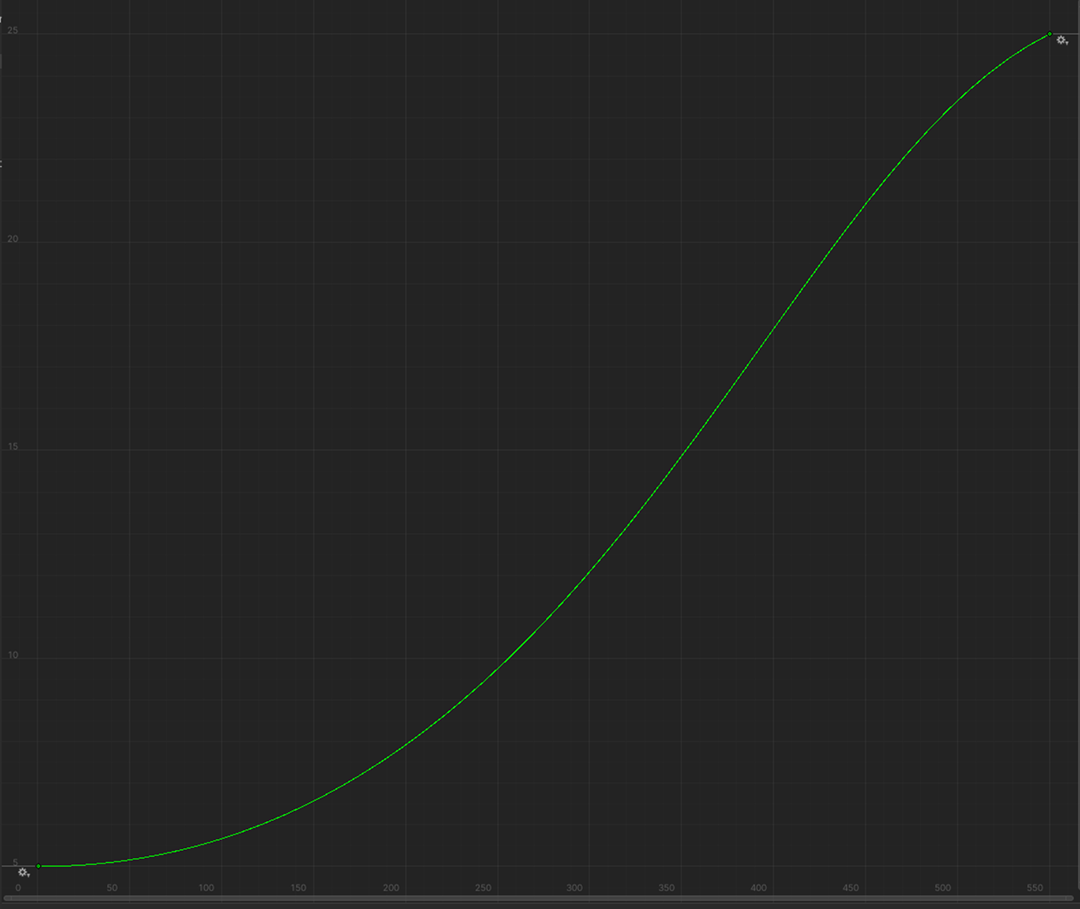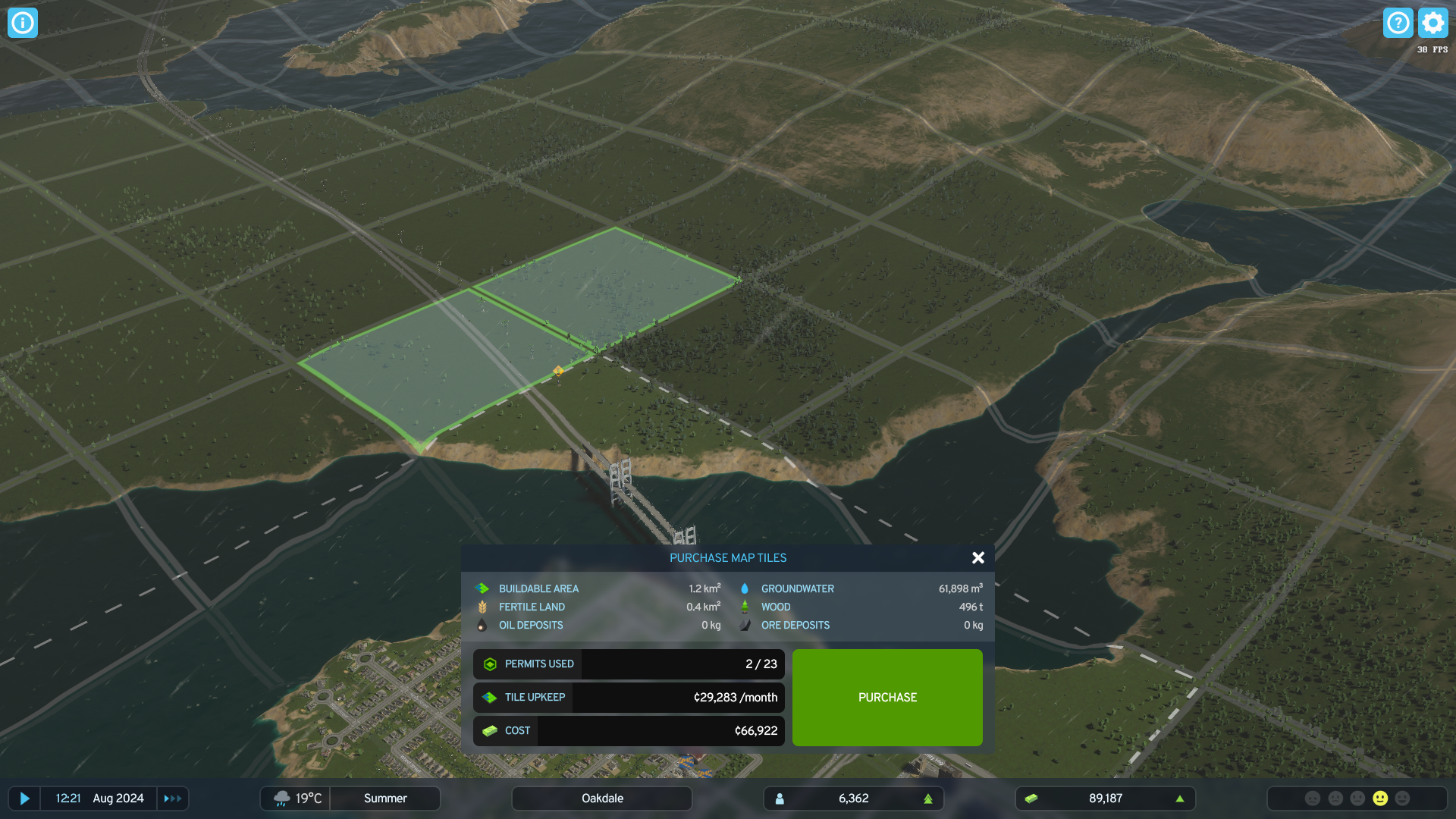Hello everyone,
Due to the numerous inquiries regarding the Tile Upkeep introduced in patch 1.1.5f1, also known as Economy 2.0, we have created this brief development diary. We hope it will clarify some of your questions and provide a deeper understanding of the rationale behind the addition of the Tile Upkeep. As always, we value your constructive feedback and any subsequent questions you may have.
To begin with, let’s cover the basics. The Tile Upkeep is a new administrative land cost applied to land you own. It’s essentially a fee that the city pays to the government for expanding its city limits, inspired by the real-world property tax paid for unused land. The initial 9 tiles that you unlock when starting a city are exempt from this cost. The upkeep fee is only applied once you expand beyond these tiles. The cost is determined as a percentage of the map tile purchase price, increasing on a curve from 5% to 25% as more tiles are acquired. This means that early map tiles have a lower upkeep cost, but as more tiles are purchased, the upkeep per tile increases, affecting the upkeep cost of all previously purchased tiles.

X axis represents the number of map tiles purchased, Y axis shows the percentage of the map tile purchase cost used to calculate the upkeep costs.
When developing the Economy 2.0 update, we felt it was essential to incorporate more management features as you build your cities. Feedback from the community following the release, as well as insights from the closed beta group, indicated that the game lacked sufficient challenges, particularly in the later stages. This lack of challenge diminished the sense of accomplishment, which we wanted to enhance. Expanding the city’s boundaries is a natural aspect of game progression, so implementing upkeep costs for map tiles seemed a fitting way to pace the gameplay, especially in the second half where city expansion accelerates and map tile expenses reflect that. The goal of the Tile Upkeep cost is to introduce more meaningful choices as you expand, requiring you to consider not only where to expand but also if your city can sustain such growth. Overall, we believe it enhances game pacing and enriches the gameplay experience.
This new cost also impacts your ability to reach the edge of the playable area and establish new Outside Connections. Let’s discuss the most economical method to create these connections early on. If you haven’t noticed, the cost of map tiles varies based on their attributes—such as buildable land and resources—making tiles with abundant water the cheapest. Hence, purchasing ocean tiles is the most cost-effective way to establish a new Outside Connection quickly. You can then construct a bridge or pipeline to the edge of the playable area. Alternatively, you could use terrain tools to create a realistic landbridge and build a road atop it, but remember, more land within the tile will increase its upkeep cost.

The UI has been updated to display not only the cost of new tiles but also their Tile Upkeep costs.
If you’re continuing an existing save, you might have unlocked numerous map tiles that now incur a high Tile Upkeep. You may expand your city further to generate additional tax revenue to offset this cost. However, if you’ve built villages or rural towns across the map using the Unlock All feature or modifications, the upkeep may become too burdensome. In such cases, we recommend enabling the Unlock Map Tiles option under Map Options during your next save load. While this disables achievements, it also eliminates the Tile Upkeep, allowing you to continue developing your city. This option is also ideal for those who prefer building small towns or villages and do not want to bypass Milestone progression.
We have received varied feedback regarding the Tile Upkeep, from those who appreciate it to those who do not. We will continue to monitor discussions about the game’s current state, including the Tile Upkeep, to fine-tune the gameplay and balance for the best possible experience. We also have a survey available through the launcher where you can share your thoughts.
Please bear in mind that adjusting game features and balance takes time. Even when we agree with your feedback, addressing it may take a while. Nevertheless, we deeply appreciate the time you take to share your thoughts about the game and the changes we implement. We look forward to reading your feedback and continuing development in the fall. Thank you for being part of this journey.
